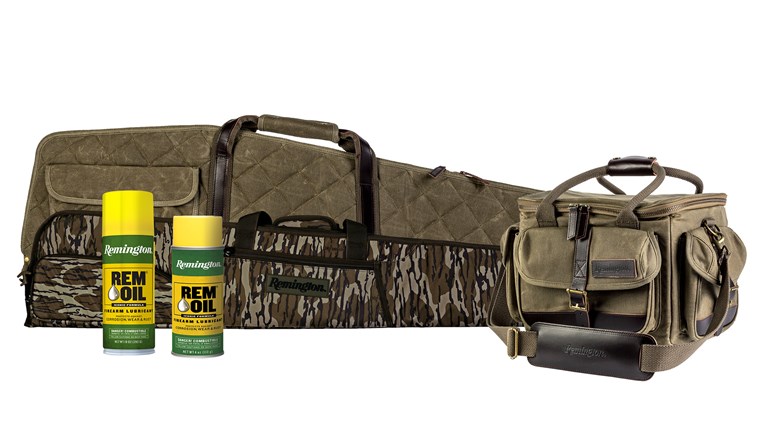This year’s introduction of the 50th anniversary Remington 1100 is a great reason to get reacquainted with the old classic. After admiring the engraved receiver of my test gun I took it straight to the skeet field where I was instantly reminded how easy it is to crush targets with an 1100. It still kicks less than almost any other semi-auto and it swings easily and points surely. I was by myself but couldn’t help blurting out loud: “This is a really nice shotgun!” If a gun maker introduced the 1100 today I would still be impressed by it.
But, of course the 1100 is 50 years old. It was designed by an engineering team aided by primitive computers back in 1963. It wasn’t the first gas-operated shotgun, but it was the first semi-auto that took full advantage of the recoil-reducing and self-cleaning potential of gas operation. The straight-out-of-the-box 1100 dominated target sports from the beginning. Just three years after it hit the market it was the most used gun at the 1966 U.S. skeet championships. Hunters loved it, too, and more than 4 million guns later, the 1100 is still rolling out of the Remington factory in Ilion, N.Y.
As they did in 2012 with the Model 700 BDL, Remington has marked the 1100’s 50th birthday with a specially decorated commemorative model. The new gun has a nice retro look. The engraved receiver design recalls the pattern used on the 2 millionth 1100 produced back in 1977 during the gun’s heyday. The receiver has gold-filled accents of a setter, a pheasant and a woodcock on the left side along with a ribbon reading “Remington 1100 1963-2013 50th Anniversary.” The right has a brace of pointers, a duck and a bobwhite quail. The wood is Remington’s B-grade walnut with nice figure and a glossy finish. A cut fleur de lis checkering pattern recalls the stamped checkering on older 1100s, and the gun has the traditional diamond grip cap. It even has the old-style white line spacers—that have seemingly gone the way of whitewall tires—on the grip and between the stock and recoil pad. The barrel is fitted with standard Rem Choke tubes. You also get a plastic hard case.
All the 50th anniversary guns are 12-gauge, 2¾-inch, 28-inch-barreled models. My test gun weighed around 8 pounds and was slightly weight-forward in a good, smooth-swinging way. On the skeet field, as I mentioned, I didn’t miss much. The soft recoil helps, but there is more to the 1100’s shootabilty. No off-the-rack stock fits everyone, but the 1100’s stock fits a lot of people with its dimensions of 1½ inches at the comb, 2½ inches at the heel and a 14-inch length-of-pull. I have always thought the thin comb of the 1100 was the secret to its one-size-fits-all reputation. The thin comb does the job of cast (lateral bend), making it easier for shooters to center their eye over the bore. Also, the 1100 is a low-profile gun. It and the 870 were built around the receiver of the 16-gauge 11-48 semi-auto, making it an even lower-profile gun than many over/unders. Part of the reason people think an 1100 fits them better is because it’s a natural pointer.
Of course the 1100 hasn’t been cutting edge since, oh, about the 1980s, when semi-autos—including the 1100 spinoff, the 11-87 that could shoot 2¾- and 3-inch shells interchangeably—arrived. Modern semi-autos (including Remington’s latest-and-greatest VersaMax, see sidebar) shoot a wider range of loads and run many times longer between cleanings. Nevertheless, if you keep an 1100 clean it won’t give you trouble. Every few hundred rounds you should wash the friction rings, scrub the inside of the inertia sleeve and the magazine tube, and scrape the buildup off the O-ring and it will run just fine. A friend cleans the parts of his in the dishwasher every time he shoots it and swears by the gun. And, if you keep replacing parts, an 1100 will last forever. It’s possible the receiver will wear out before you do, but to hardcore 1100 shooters that just means it’s time for a new receiver.
The 1100—this one and any of the other 4 million in existence—isn’t just an important piece of shooting history; it’s still a great gun today. I once remarked to a friend at Briley Manufacturing in Houston that I was surprised no manufacturer offered a “dove special” shotgun. He said, “They do. It’s called the 20-gauge 1100. Some of our customers keep 10 for guests to shoot in their dove fields.”
I started both my sons shooting 20-gauge Youth 1100s because I wanted them to think shooting was fun, not painful. If Remington’s commemorative gun appeals to you, buy one and you may leave your newer semi-autos at home and reach for this one on your way to the gun club or the dove field.
Technical Specifications:
• Type: gas-operated, semi-automatic shotgun
• Gauge/Length: 12-gauge / 2 3/4"
• Barrel: 28-inch vent rib
• Magazine Capacity: 4 + 1
• Sights: white front bead
• Safety: trigger-guard-mounted crossbolt
• Stock: checkered walnut; length of pull 14"; drop at heel 2½"; drop at comb 1½"
• Overall Length: 50½"
• Weight: 8.25 lbs.
• Metal Finish: blued steel, gold-filled accents
• MSRP: $1,999



































